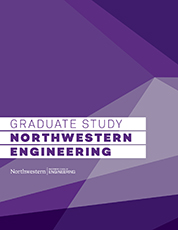Alex AndreiuInnovation Designer, Southwest Airlines

Alumni Interview
"It was during EDI that I fell in love with UX Design and knew I wanted to pursue a career that would let me flex both research and design skillsets."
Tell us what your current title is and what your role entails.
I currently work as an Innovation Designer. Our team focuses on Service Moderation and improving the Airport Experience for both Customers and Employees. Our roles are generalized so you can find us doing a mix of research, design and strategy. I love that every week looks different.
When you started EDI, did you know what industry you wanted to work in?
When I first started EDI, I was really interested in pursuing a UX research career in healthcare. I was drawn to the fact that there are numerous stakeholder groups with competing interests that therefore creates very complex healthcare problems. It was during EDI that I fell in love with UX Design and knew I wanted to pursue a career that would let me flex both research and design skillsets. When the Innovation Designer role at Southwest Airlines came around, I instantly jumped on the opportunity. Healthcare and Aviation are more closely aligned than one may think — both industries are highly regulated, involve many stakeholder groups, and tend to be quite bureaucratic. I ended up being in a very similar industry as I initially wanted when I started EDI.
Tell us about an EDI course that made an impact on you.
For me, that would be Design Strategy. In this course, we took everything we learned from our Design Studio courses about Desirability and layered on top Feasibility and Viability. It felt very full circle. Many of the topics we discussed in this class have been extremely applicable to my current role.
What is one lesson you learned during your EDI journey that has stuck with you?
You can’t solve every problem, even when it feels wrong not to. We do a lot of exploratory research in EDI and through that we tend to uncover more than is in the scope of the project. We are trained to solve problems – it is part of our nature as Human-Centered Designers, so it can be quite difficult to let go. This is why documentation is important. Thoroughly document everything that was uncovered during research, focus on problems within the project scope, and make sure to always provide clear recommendations and next steps. That way you know you are raising awareness for the other problems uncovered, while also delivering on what was asked in the project scope.
What was your EDI thesis project and what inspired you to pursue it?
My thesis project was about providing parents who experienced a miscarriage or stillbirth with personalized, accessible resources for managing grief. Leading up to my thesis project, I was having conversations with friends about grief, and how it manifests, and how every individual has a unique, personal, and different form of grieving. It was from these conversations that I knew I wanted to do a project on grief, and particularly grief from an unexpected death. Miscarriages and stillbirths are not usually thought of as an unexpected death. There is a lot of silence, shame, and stigmatization around this topic and I wanted to use my thesis project as a way to raise awareness and begin to break the stigma around pregnancy loss.
What advice do you have for an EDI student interested in working in your industry?
Be patient – Change can take a long time for aviation companies where there are a lot of different stakeholder groups that can sometimes have competing interests.
Be prepared to pivot — Things can change in an instant, especially in a volatile industry like aviation. So being dynamic and open to change is imperative.
Be persistent — Not everyone will believe or trust the human-centered design process, so it is important to be an advocate for our work and our methodology.

